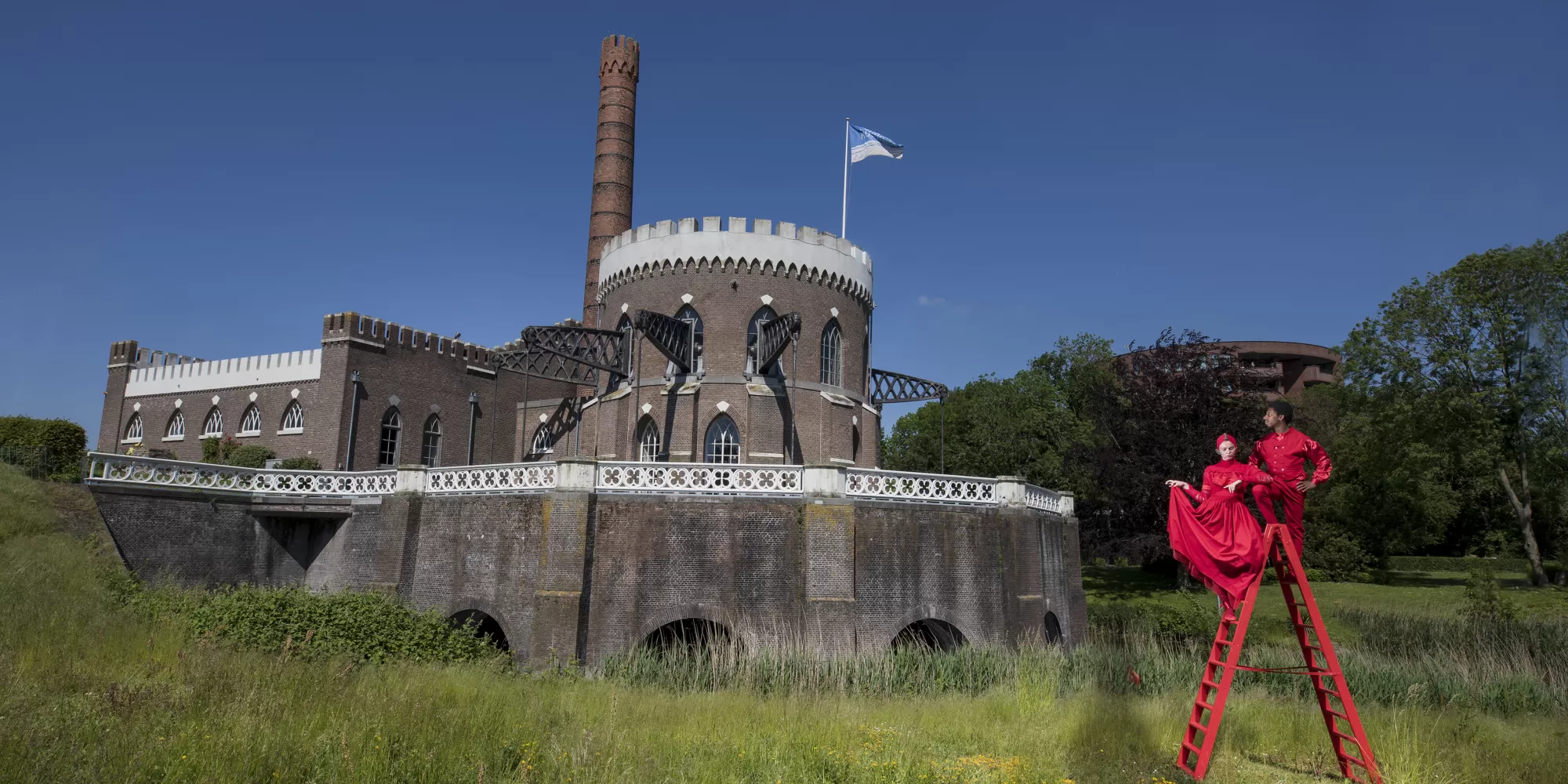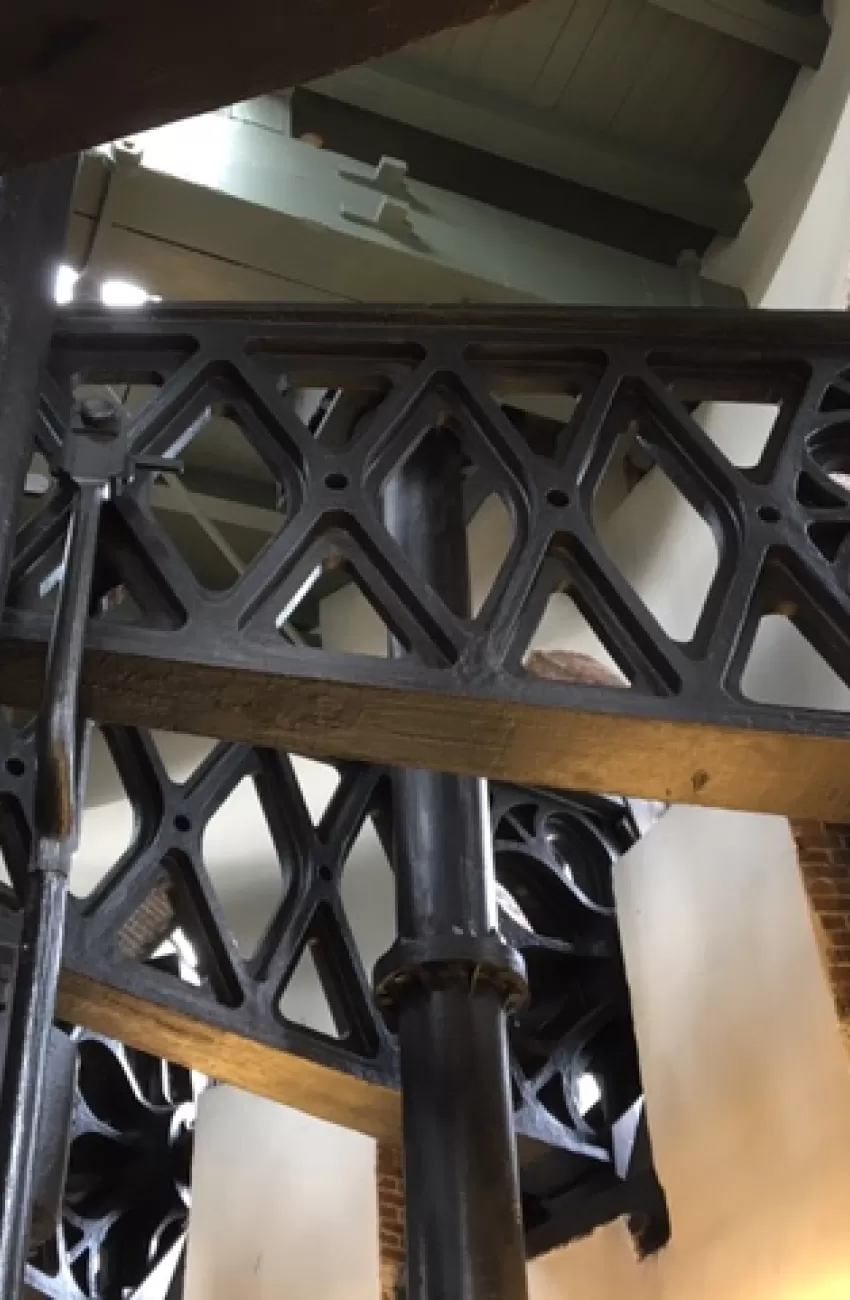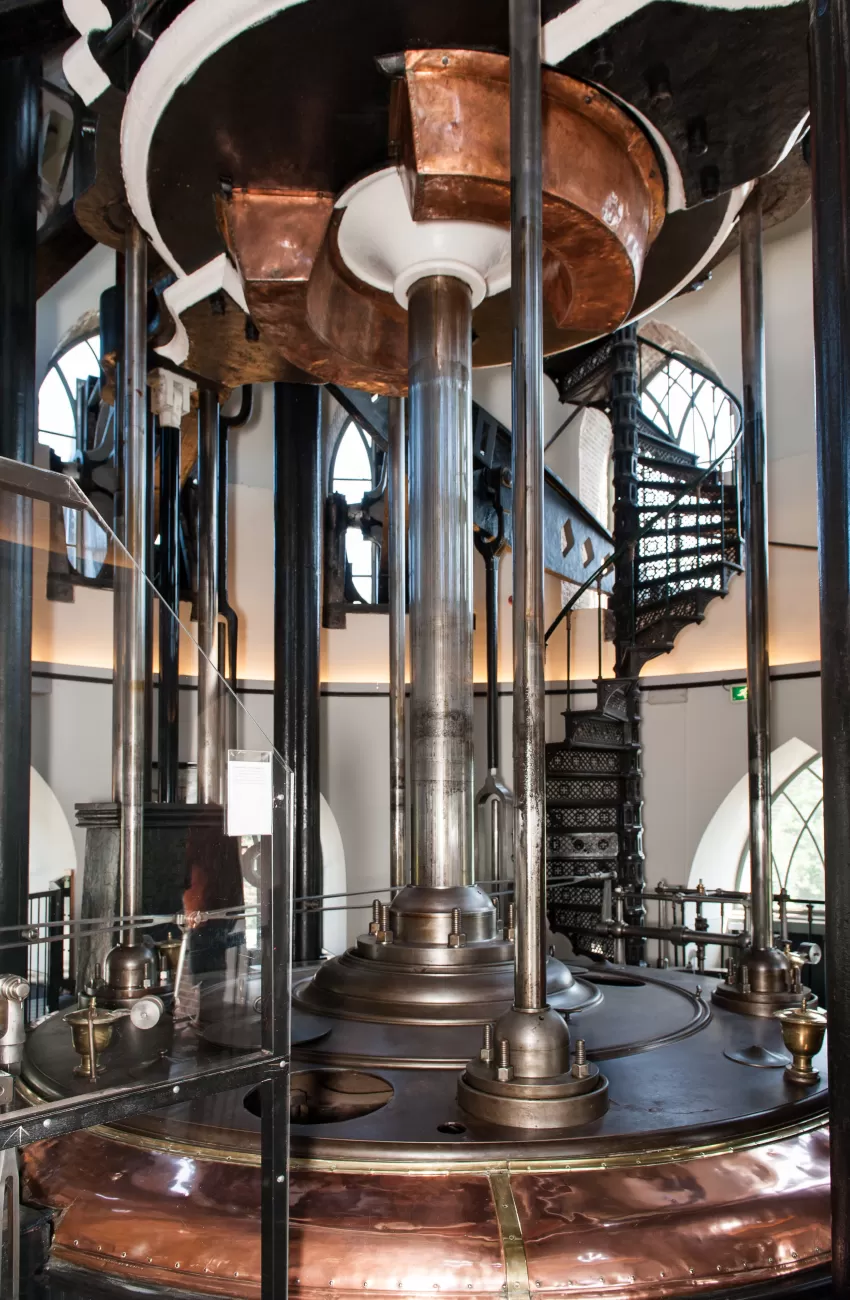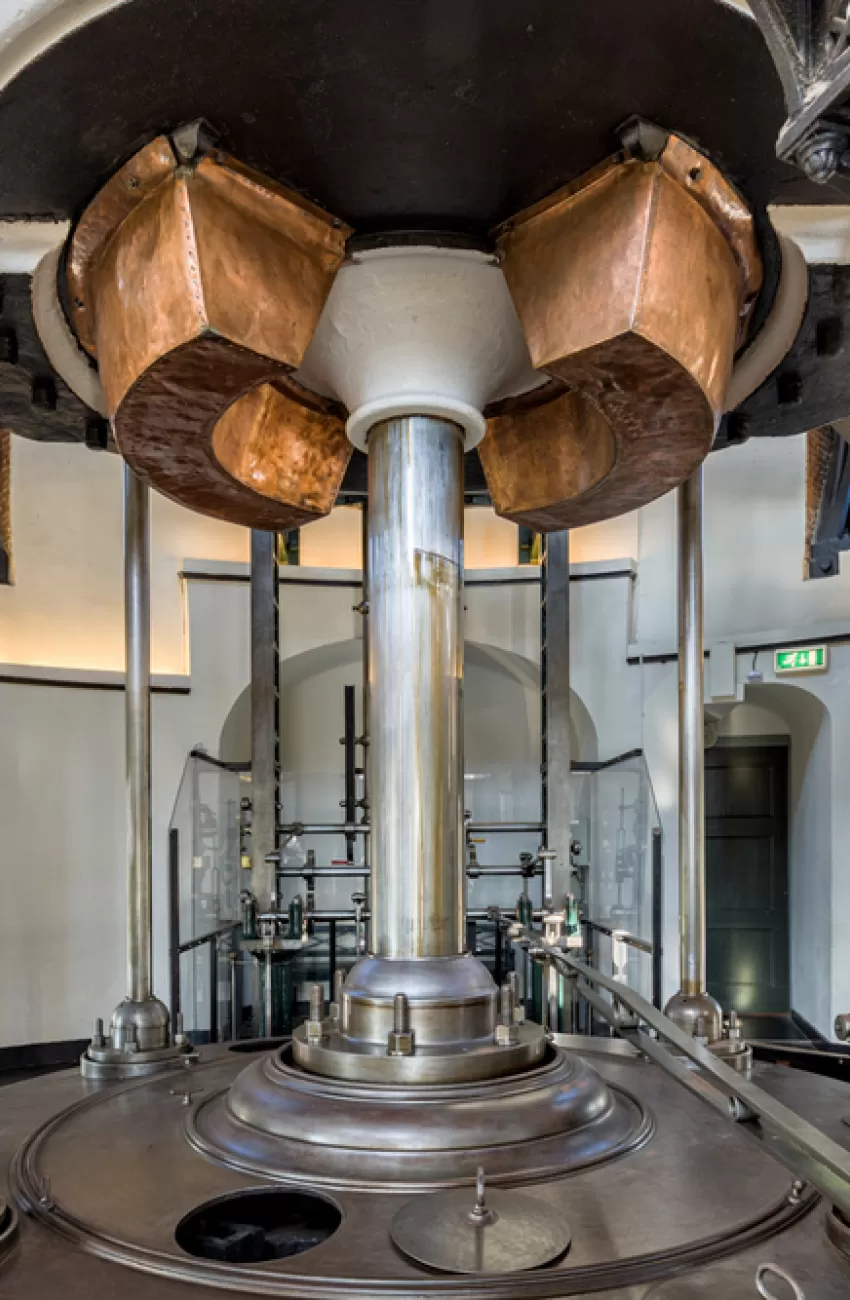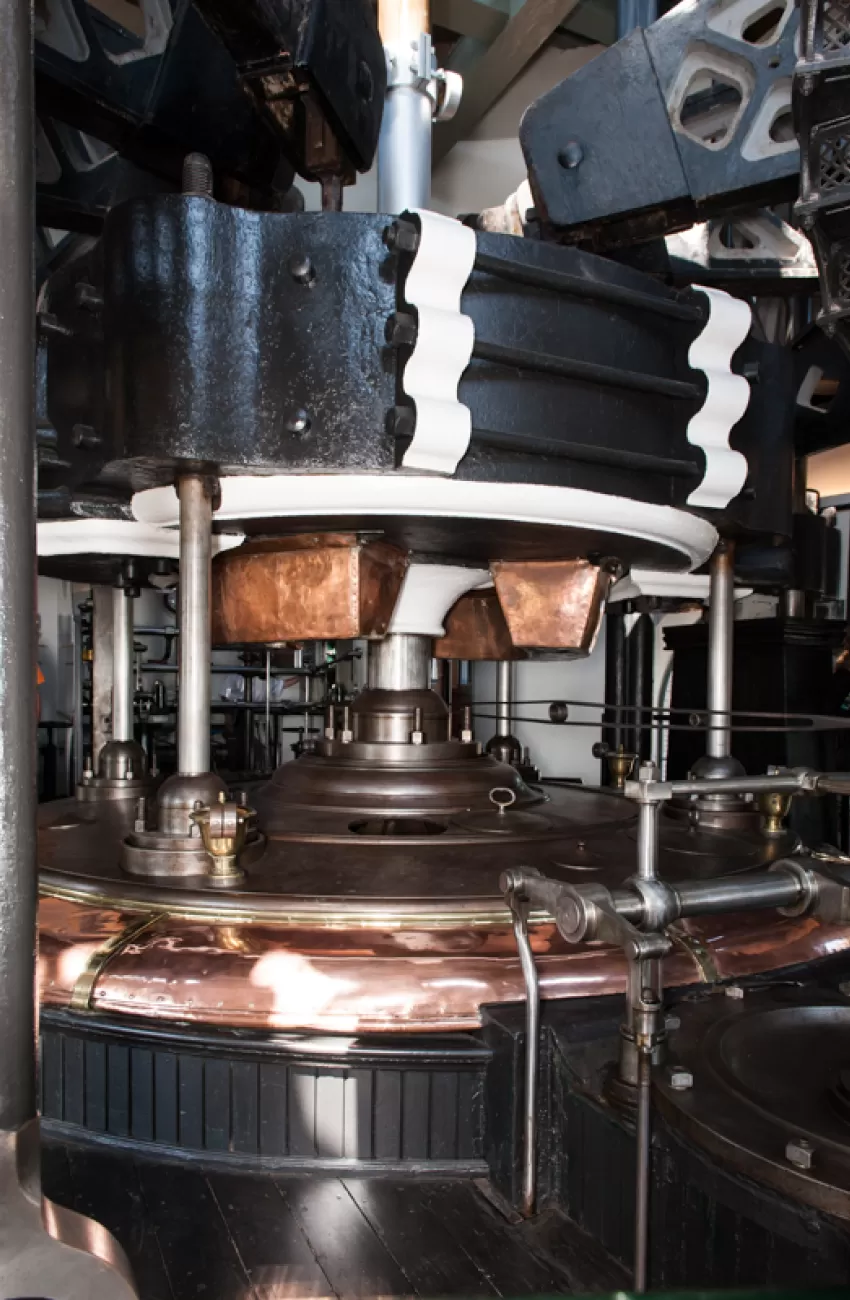Marvel at the power of 19th-century steam technology and the centuries-long battle against water. Cruquius Museum tells the story of the reclamation of Haarlemmermeer, the ‘Delta Works of the 19th century’. The highlight of every visit is the demonstration of the largest steam engine in the world.
Cruquius Museum's museum presentation has been completely revamped. OPERA Amsterdam designed a tough and interactive presentation that makes the national monument shine in 2020. The transformation of the pumping station was the first phase of the museum foundation's major new building plan. The second phase, the museum extension with the Cruquius Pavilion, can now be visited. The final phase, a connecting corridor between the pumping station and pavilion, is under development. Read more here.
steam pumping station
Steam Pumping Station Cruquius is a unique example of neo-Gothic architecture and a top-100 monument. The building has heavy buttresses, pointed arch windows and battlements. Inside, cast-iron ornaments were frequently used. The pumps were powered by the largest steam engine in the world. The impressive combination of technology and architecture make the steam pumping station De Cruquius a world-class industrial monument. Its operation can be demonstrated to visitors.
machine
Its pride and joy is the world-famous 1849 steam engine, which can be viewed in its full glory in the engine room. The largest cylinder in the world, with a diameter of 3.66 metres, is located under the operating floor. The eight pumps are located at the end of the balance arms. Each pump consists of a tube, piston and butterfly valves. The piston is moved with chains in the piston tube. Each pump can pump 8,000 litres of water up almost 5 metres per stroke. Five strokes were made per minute.
Moving the piston up and down (for demonstrations) in this cylinder is now done with a modern hydraulic system for all visitors. Occasionally, a malfunction in the system prevents the machine from moving.
klimaatverandering
Het klimaat is geen vaststaand gegeven. Grote veranderingen zijn aan de orde van de dag. Ze hebben te maken met het stijgen van het zeewaterniveau als gevolg van het smelten van de poolkappen en de wereldwijde temperatuurstijging. Hierdoor is het steeds lastiger om de polders droog te houden. Cruquius Museum vindt het belangrijk het publiek te informeren over de gevolgen van deze veranderingen en over de beslissingen hieromtrent. Zoals in de 19de eeuw Koning Willem I de beslissing nam het meer droog te maken, zo kunnen we in de toekomst ook voor uitdagingen komen te staan. Het is zaak goed mee te bewegen met de klimatologische veranderingen. Met onze vaste presentatie, met de rondleidingen en educatie en met de publicaties laten we weten dat ook in de toekomst lef en innovatie nodig is om droge voeten te houden in Nederland.
